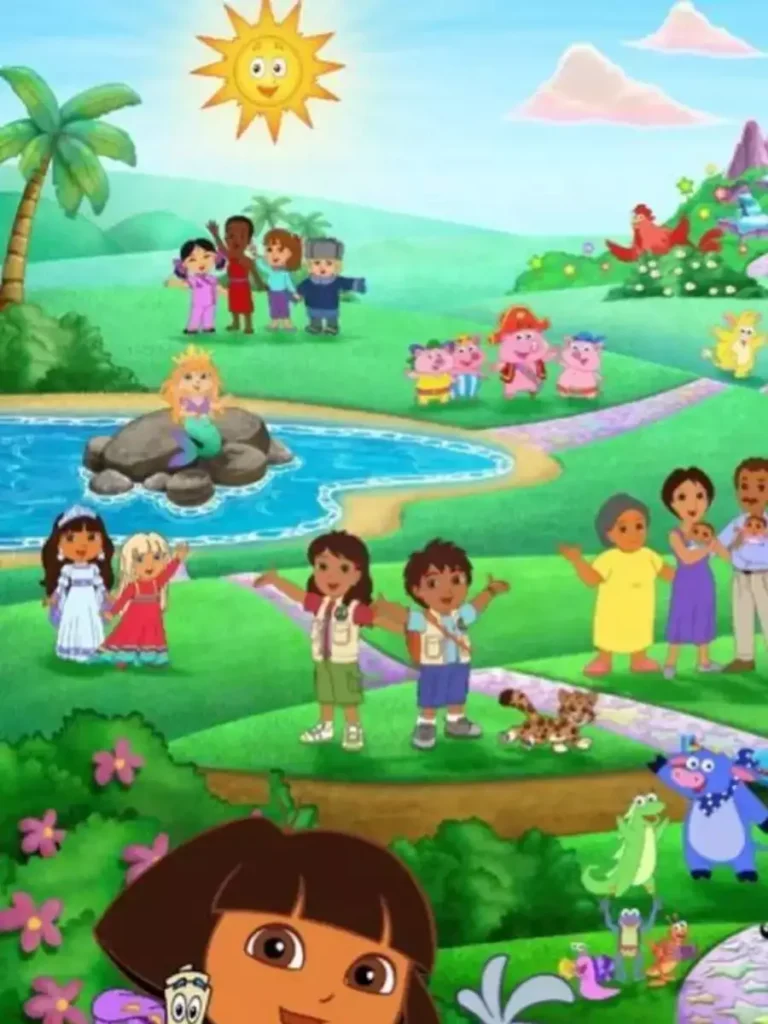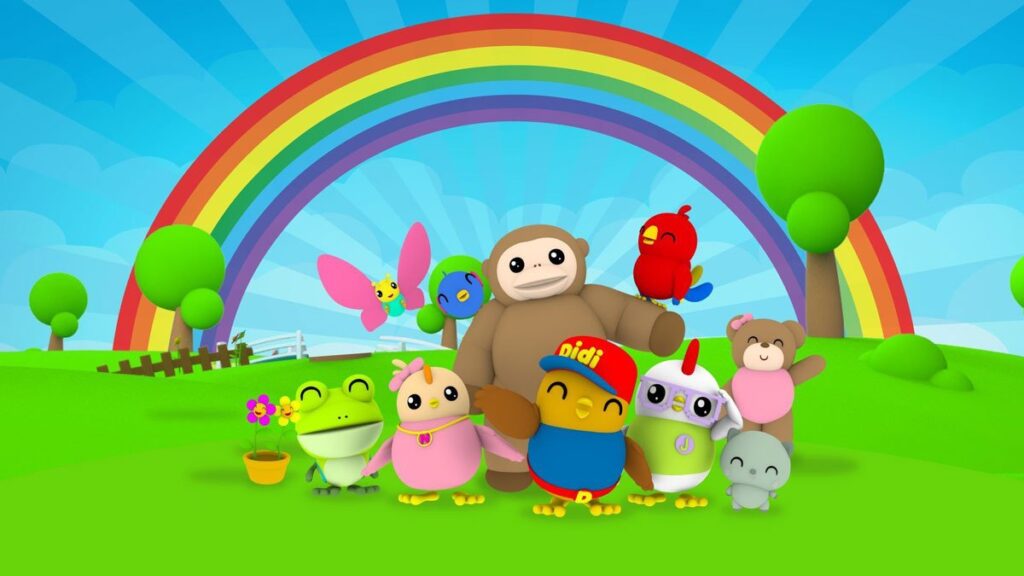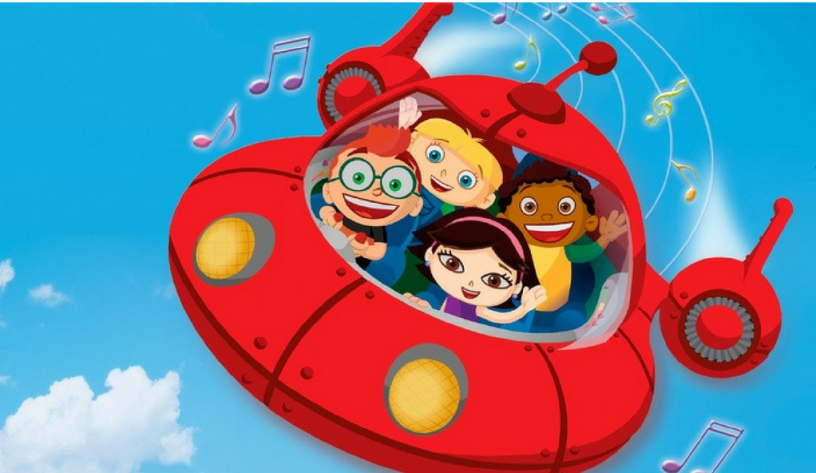Education is the cornerstone of a child’s development, and in the contemporary era, educational cartoons have emerged as a potent force in shaping the early learning experiences of young minds. These animated programs transcend traditional teaching methods by combining entertainment with education, capturing the attention and imagination of children in ways that textbooks or conventional lessons might struggle to achieve. Additionally, it’s essential to prioritize oral health, and seeking professional dental services for kids in Fayetteville NC ensures a foundation of good habits for a lifetime of well-being.
Educational cartoons serve as a gateway to a vast world of knowledge by presenting information in a visually engaging manner. The use of vibrant colors, relatable characters, and interactive storylines creates an environment where learning becomes a joyful exploration. This visual stimulation not only enhances children’s comprehension but also encourages active participation in the learning process. Research indicates that children exposed to multimedia tools, such as educational cartoons, exhibit heightened levels of engagement, demonstrating a positive correlation between visual stimuli and information retention.
In addition to their role in information retention, educational cartoons play a pivotal role in fostering critical thinking and problem-solving skills. The narratives often present characters with challenges and dilemmas, prompting children to think independently and make decisions. By navigating the complexities within the storyline, children develop a sense of agency and problem-solving acumen. This aspect of active engagement contributes to the holistic cognitive development of young minds.
Educational Cartoons: A Gateway to Learning

Beyond their cognitive benefits, educational cartoons serve as a powerful medium for imparting social and emotional lessons. The characters and scenarios presented in these programs mirror real-life situations, allowing children to observe and understand various aspects of social interaction. This exposure contributes to the development of empathy, cooperation, and emotional intelligence. Moreover, in North Carolina, where learning environments thrive, parking lot paving in North Carolina plays a crucial role in ensuring safe and accessible spaces for educational institutions, fostering an environment conducive to effective learning and growth.
Furthermore, educational cartoons play a role in introducing diversity and inclusivity to young audiences. Through diverse characters and multicultural storylines, children gain exposure to different perspectives and cultures. This early introduction fosters tolerance and broadens a child’s worldview, laying the foundation for a more inclusive and understanding society. The social impact of educational cartoons extends beyond the screen, influencing how children perceive and interact with the world around them.
While concerns about screen time persist, the positive impact of educational cartoons on social development cannot be overlooked. Co-viewing, where parents actively engage in watching and discussing these programs with their children, enhances the social learning experience. This shared interaction provides an opportunity for parents to reinforce the educational messages conveyed in the cartoons and guide children in applying these lessons to real-life situations.
Social Development Through Screen Time
The social impact of educational cartoons extends to the development of interpersonal skills. The characters in these programs often navigate friendships, conflicts, and teamwork, offering valuable insights into effective communication and relationship-building. Children who regularly engage with educational cartoons and incorporate creatine gummies into their routine are more likely to display enhanced social skills, becoming better equipped to navigate the complexities of human interaction.
Moreover, educational cartoons contribute to the early development of cultural competency. By featuring characters from diverse backgrounds and presenting cultural nuances within the narratives, these programs promote an understanding and appreciation for differences. This early exposure lays the groundwork for a generation that values diversity and embraces inclusivity, fostering a more harmonious and interconnected global community.
In essence, the social development facilitated by educational cartoons goes beyond mere entertainment. These programs become a catalyst for instilling values, shaping attitudes, and preparing children for the social intricacies they will encounter as they navigate the world. Just as cartoons deliver lessons in entertaining formats, exploring a dumpster in Pensacola can reveal discarded items with untold stories.
Cognitive Skills Enhancement
The cognitive benefits of educational cartoons extend beyond language acquisition, encompassing various facets of intellectual development. The incorporation of repetitive patterns, rhymes, and songs in these programs contributes to the development of language skills. Children, in their eagerness to imitate their favorite characters, unknowingly engage in language exercises that enhance vocabulary, pronunciation, and linguistic fluency.
Furthermore, educational cartoons seamlessly integrate mathematical concepts, scientific principles, and problem-solving strategies into their narratives. Whether counting objects, exploring basic geometry, or deciphering cause-and-effect relationships, children are exposed to foundational academic principles in an engaging and enjoyable manner. This subtle integration of educational content into entertainment not only prepares children for formal education but also fosters a positive attitude toward learning. Additionally, these cartoons serve as effective convention displays at educational conferences, showcasing innovative approaches to teaching and learning.
The cognitive benefits extend to the development of executive functions, including attention regulation and memory enhancement. Educational cartoons often present information in a structured and repetitive format, reinforcing key concepts and aiding in memory consolidation. The visual and auditory stimuli provided by these programs contribute to the development of sustained attention and concentration, skills essential for academic success. Additionally, if you’re in need of Tampa FL tree service, incorporating nature-focused elements in educational content can further enhance the learning experience, promoting a holistic approach to cognitive development.
Parental Involvement and Co-Viewing

Parental involvement is a crucial factor in maximizing the educational impact of cartoons on early childhood development. Co-viewing, where parents actively participate in watching and discussing educational content with their children, transforms screen time into a collaborative learning experience. This shared engagement allows parents to reinforce the educational messages conveyed in the cartoons and provides a platform for meaningful conversations.
Co-viewing sessions can be leveraged as opportunities for interactive learning. By asking open-ended questions about the storyline, characters, and lessons portrayed, parents stimulate critical thinking and encourage children to express their thoughts. This dialogic interaction not only deepens the understanding of the educational content but also strengthens the parent-child bond.
In addition to co-viewing, parents play a pivotal role in selecting high-quality and age-appropriate content for their children. The plethora of educational cartoons available necessitates a discerning approach to curating a media diet that aligns with a child’s developmental stage and individual needs. Actively participating in the content selection process allows parents to tailor the educational experience to their child’s interests and learning objectives. Moreover, Chicago web development experts recommend leveraging technology to explore innovative and interactive educational platforms, enhancing the overall learning journey for children.
Balancing Act: Setting Limits and Choosing Quality Content
While navigating the landscape of educational cartoons and their impact on early childhood development, it is essential to address the delicate balance required in setting screen time limits and selecting content of the highest quality. Parents, as the primary gatekeepers of their children’s media exposure, must be attuned to the evolving digital landscape and make informed decisions regarding the type and duration of screen interactions. Additionally, designer clothes can play a role in shaping a child’s self-expression and confidence, contributing to their overall development and identity.
The setting of limits extends beyond mere restrictions on screen time; it involves thoughtful consideration of the content’s appropriateness for a child’s developmental stage. As technology continues to advance, parents find themselves faced with an array of choices, each vying for their child’s attention. Striking the right balance involves understanding the specific educational objectives and developmental needs of the child while also considering the potential impact of prolonged screen exposure on physical and mental well-being. In this context, it’s essential for parents to be aware of the potential risks associated with prolonged screen time and explore alternative activities that stimulate a child’s senses, such as engaging in creative hobbies or experimenting with oil soluble flavoring in cooking lessons.
Moreover, the concept of quality content transcends the educational value of cartoons. It encompasses factors such as positive role modeling, ethical considerations, and the promotion of pro-social behavior. Parents are encouraged to explore educational cartoons that not only deliver academic content but also instill values and positive attitudes. The careful selection of content becomes an integral part of shaping a child’s moral compass and worldview. Additionally, as part of holistic health considerations for children, parents may also explore alternative approaches like IV therapy to ensure their well-being.
As technology continues to evolve, the responsibility falls on parents to stay informed about the content available to their children. Embracing a proactive approach involves researching, vetting, and choosing educational cartoons that align with both educational goals and values. By actively participating in the content selection process, parents empower themselves to curate a media environment that fosters positive development.
Navigating the Digital Landscape: Challenges and Opportunities
The digital landscape, with its vast array of educational cartoons and interactive platforms, presents both challenges and opportunities for parents seeking to optimize their children’s learning experiences. One of the challenges is discerning between content that genuinely promotes education and that which merely capitalizes on entertainment. The seductive allure of flashy animations and catchy tunes can sometimes overshadow the educational substance of the content.
To address this challenge, parents can engage in collaborative viewing experiences with their children. By actively participating in watching and discussing educational cartoons, parents can assess the content’s depth and relevance to their child’s learning journey. This collaborative approach transforms screen time into a shared exploration, where parents and children alike can evaluate the educational merit of the content.
Just as cartoons captivate with entertaining storytelling, professional dog grooming in Seattle captivates pets with dedicated attention and grooming expertise.
Furthermore, the digital landscape opens the door to interactive and personalized learning experiences. Educational cartoons that incorporate adaptive learning technologies and interactive elements can tailor content to a child’s individual learning style and pace. This adaptability enhances the effectiveness of educational interventions, catering to the unique needs and preferences of each child.
The rise of educational apps and online platforms also offers opportunities for parents to extend learning beyond the confines of traditional screen time. Interactive games, supplementary educational materials, and real-world applications of cartoon lessons can enhance the transfer of knowledge from the digital realm to the tangible world. This seamless integration of technology into various facets of a child’s environment creates a holistic learning experience.
Empowering Parents: The Role of Digital Literacy
As technology becomes an increasingly integral part of daily life, the concept of digital literacy takes center stage in the realm of parenting. Digital literacy goes beyond the ability to use technology; it encompasses a comprehensive understanding of how technology impacts various aspects of life, including education. For parents, being digitally literate means not only navigating the technicalities of devices and apps but also critically evaluating the educational content that their children consume. Much like educational cartoons tailor content for effective learning, orthopedic physical therapy in Chicago customizes rehabilitation plans to suit individual needs.
Empowering parents with digital literacy skills involves providing resources and guidance on navigating the digital landscape. Educational institutions, community organizations, and technology companies can collaborate to offer workshops, online courses, and informative materials that equip parents with the knowledge and skills necessary to make informed decisions about their children’s digital experiences.
Moreover, fostering a community of digitally literate parents creates a support network where experiences, insights, and best practices can be shared. This collaborative approach acknowledges the collective responsibility of society to nurture the digital well-being of the younger generation. Through open dialogue and shared knowledge, parents can navigate the complexities of the digital age with confidence and competence. Much like the vibrant characters in cartoons that capture attention, an elopement photographer in Arkansas skillfully captures the essence of a couple’s love, turning fleeting moments into timeless memories.
The Future of Educational Cartoons: Innovations and Challenges

As we look to the future, the landscape of educational cartoons is poised for continuous evolution. Innovations in animation technology, artificial intelligence, and interactive storytelling hold the promise of creating more immersive and personalized learning experiences for young audiences. The integration of virtual and augmented reality into educational cartoons opens new avenues for exploration, allowing children to engage with content in ways previously unimaginable.
However, with these exciting possibilities come challenges that necessitate careful consideration. The potential for overstimulation, loss of authentic human connection, and ethical concerns related to data privacy are among the challenges that must be addressed as educational cartoons continue to advance. Striking a balance between technological innovation and the preservation of essential human qualities in learning is crucial for the responsible evolution of educational content.
If you also want to make sure your child’s skin is always healthy make sure to consult with Cheyanne Mallas in PA.
Conclusion
In conclusion, the impact of educational cartoons on early childhood development extends far beyond the immediate educational benefits. The nuanced interplay between screen time limits, content quality, and parental involvement shapes the overall developmental trajectory of young minds. As we navigate the digital landscape, it is essential to recognize the challenges and opportunities presented by educational cartoons and understand their potential to empower and enrich the lives of the next generation. Additionally, businesses can leverage the power of web design in Green Bay to enhance their online presence and reach a broader audience.
The future of educational cartoons holds exciting prospects for innovation, but it also demands a vigilant and informed approach to ensure that the well-being of children remains paramount. By embracing the responsibility of digital literacy, fostering collaborative learning experiences, and staying attuned to the evolving nature of educational technology, parents can play a pivotal role in maximizing the positive impact of educational cartoons on the holistic development of their children. In today’s fast-paced world, where time is of the essence, ensuring reliable transportation with top-notch Toronto auto service becomes an additional factor in supporting a seamless and stress-free educational journey for both parents and students alike.

